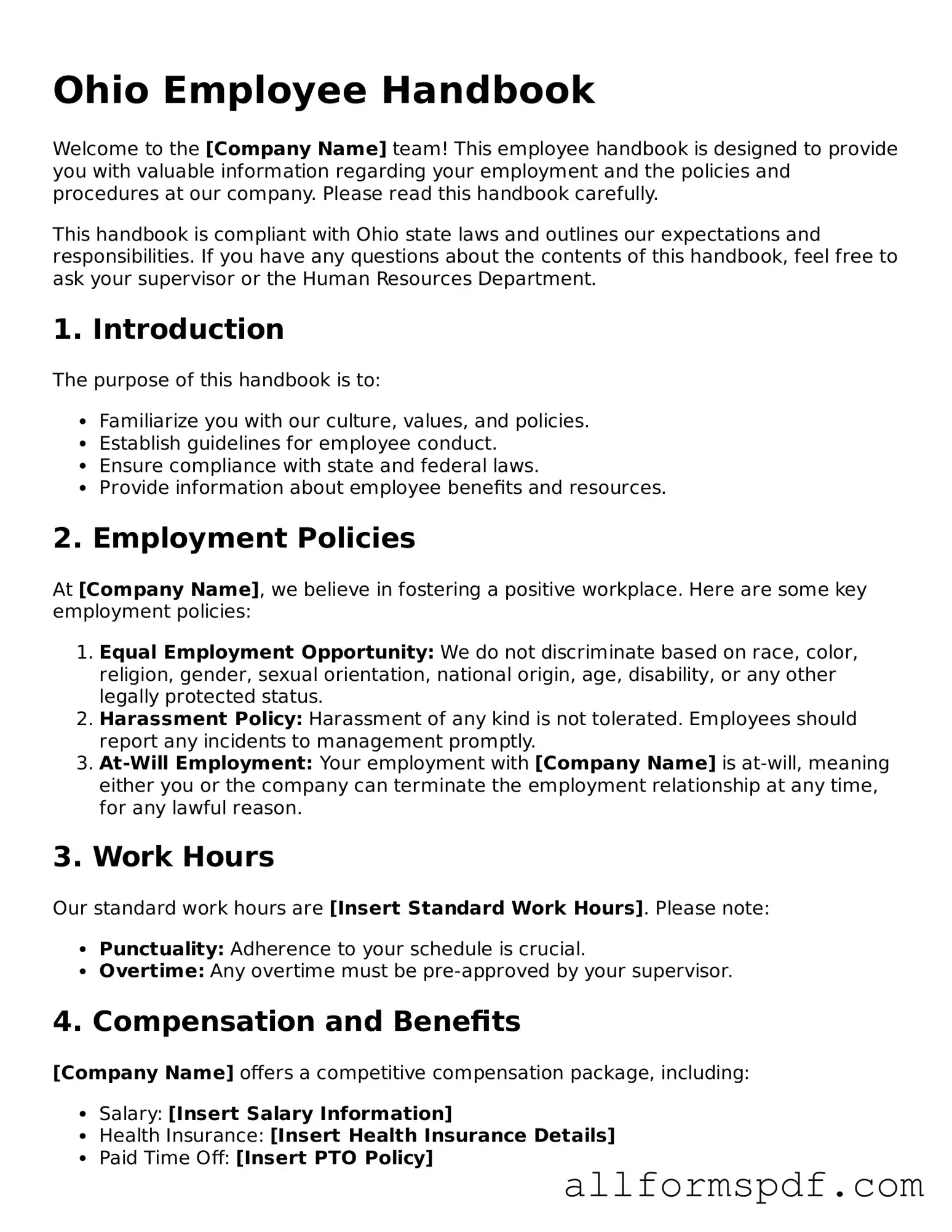Completing the Ohio Employee Handbook form can be straightforward, but many individuals encounter common pitfalls. One frequent mistake is overlooking the importance of accuracy in personal information. Employees often rush through filling out their names, addresses, or social security numbers, leading to errors that can cause complications later. It is crucial to double-check all entries to ensure they match official documents.
Another common error is failing to read the handbook thoroughly. The handbook contains vital information regarding company policies, employee rights, and responsibilities. Skimming through the content can result in misunderstandings or missed obligations. Taking the time to read the handbook can prevent future conflicts and ensure compliance with company standards.
Some employees neglect to sign and date the acknowledgment section of the form. This step is essential as it confirms that the employee has received and understood the handbook. Without a signature, the employer may not have a record that the employee was informed of company policies, which can lead to disputes down the line.
In addition, individuals sometimes forget to ask questions if they are unsure about certain policies. The handbook can contain complex language or concepts that may not be immediately clear. Reaching out to a supervisor or HR representative for clarification can help avoid confusion and ensure that employees are fully informed about their rights and responsibilities.
Lastly, failing to update the form when personal circumstances change is a mistake many make. Life events such as a change of address, marital status, or legal name should be reflected in the employee records. Keeping this information current is essential for effective communication and compliance with company policies.
